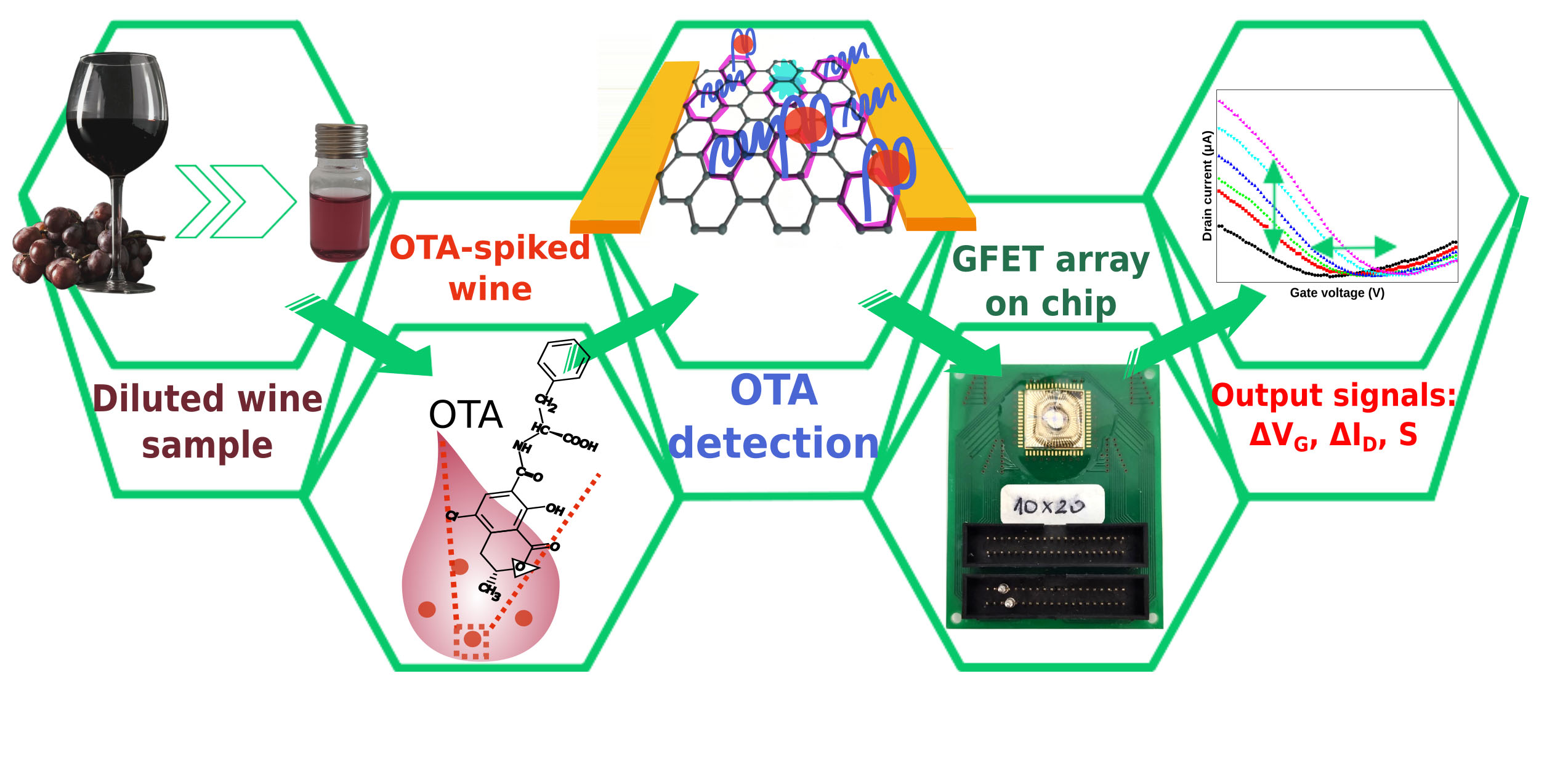| Dec 22, 2021 | |
From aptamer-graphene interaction understanding to biosensor performance improvements |
|
| (Nanowerk Spotlight) The use of graphene-based field-effect transistors in the past decade has been shown as one of the most powerful biosensing units for the detection of numerous biological and biochemical analytes. | |
| Distinctly specific electrical properties of graphene in the domain of field-effect transistors, along with high surface-to-volume ratio contribute to incredibly high sensitivity of this type of biosensor, which allows the development of reliable and fast point-of-care (POC) devices for the detection of different types of analytes in real time. | |
| To ensure the selectivity of such biosensors, the graphene channel in transistors is functionalized with the variety of biorecognition elements, such as enzymes, antibodies, and aptamers. | |
| Aptamers are synthetic oligonucleotides developed in purpose of highly specific binding to the target molecule in the same manner as antibodies. The precedence of aptamers lies in their scalability and low-cost production, yet similar binding properties to antibodies, which enables technological benefits of graphene-based aptasensor development. | |
| The principle of detection of target molecules via aptamers relies on aptamer 3D reconfiguration during binding, leading to electric charge redistribution in the vicinity of the graphene surface and latter change of its electrical characteristics. | |
| In view of the 'liquid-gated' regime of these biosensors, where the field effect is manifested by ionic charge redistribution in electrolyte, the impact of such redistribution can have considerable impact on biosensor performance, primarily on aptamer 3D reconfiguration. | |
| Currently, graphene-based aptasensors have found its application in the detection of large molecules, e.g., proteins, where the main impact on graphene properties is given by the analyte. On the other hand, the development of graphene-based aptasensors for the detection of small molecules, e.g., toxins, is still challenging for researchers. | |
| A group of researchers from BioSense Institute (Serbia), University of Texas at Austin (USA), National Research University of Electronic Technology (Russia), and A.K. Prokhorov General Physics Institute of the Russian Academy of Sciences (Russia), have proposed a microscopic model of mycotoxin detection via graphene-based aptasensors enabling improvement of biosensor sensitivity, which is based on the investigation of aptamer interaction mechanism with graphene channel during binding of targeted molecules (Biosensors & Bioelectronics, "Real-time detection of ochratoxin A in wine through insight of aptamer conformation in conjunction with graphene field-effect transistor"). | |
 |
|
| Schematic principle of measurement of Ochratoxin A concentration in wine by graphene field-effect transistors modified with aptamers. (Source: BioSense Institute) | |
| Namely, it has been shown how aptamers interact with a graphene surface after their anchoring via linker molecules in terms of mycotoxin detection. The model proposes aptamer adsorption on the graphene surface via π-π interaction achieving a significant modulation of charge carriers in graphene crystal lattice due to negatively charged aptamer backbone. | |
| During binding of specific molecules, aptamers change their configuration and drawing away the chargers from graphene surface, which is manifested by graphene electrical properties change. In other words, different charge distribution in the vicinity of graphene surface leads to the desired signal of the biosensor. | |
| To validate their model, the researchers used electrolyte solutions with different ionic strengths (i.e., ion concentration) to modulate capacitive ability of the electrolyte during gating effect. | |
| It is well-known that in such electrolyte systems an electrostatic interaction can be shielded (screened) by ions present in the solution, which can notably damp the signal. By ion concentration decrease, the researchers achieved an increase of unscreened spatial area of aptamer reconfiguration, i.e., an increase of sensing capabilities of the biosensor. | |
| The model indicated coordinated results in both static and dynamic mode of the biosensor showing excellent repeatability of results. | |
| Besides, pH values of the solution must be considered. The developed biosensing device showed promising results in the detection of mycotoxins in real samples of wine, which is characterized with low pH values (between <2.5 and 4). By mycotoxin detection in different wine types (e.g., red and white wine), the analysis of pH impact on biosensor performances with given model is qualified. Introducing the pH impact on electrical properties of graphene during aptamer reconfiguration, the results with outstanding match to the calibration model are obtained. | |
| The detection of mycotoxin has been realized on a previously developed platform and the performance of the biosensor has been improved (read more: "Graphene transistor catches mycotoxins in food"). | |
| The limit of detection (LOD) is estimated at only 1 pM and time response in just 10 seconds, making the developed platform a high-performance device in the biosensing world. Furthermore, biosensor performance in real samples – like the very complex structure of wine – is not degraded much (signal response within 1 minute) opening a promising perspective for future development steps of this device. | |
| Additionally, the developed device is well suited for multiplex measurements on a single chip, allowing the advancement of the device for in-field, on-demand, and point-of-care detection of multiple analytes. | |
| The development of differential biosensors, which would work on the principle of self-calibration, is another characteristic of this device. The principle of differential sensor is based on the existence of both detection and control units on the same platform enabling simultaneous measurement of analyte and blank signal, which would enable faster and more realistic calibration of the device. | |
| A Nanowerk exclusive provided by BioSense Institute | |
|
Become a Spotlight guest author! Join our large and growing group of guest contributors. Have you just published a scientific paper or have other exciting developments to share with the nanotechnology community? Here is how to publish on nanowerk.com. |
|
